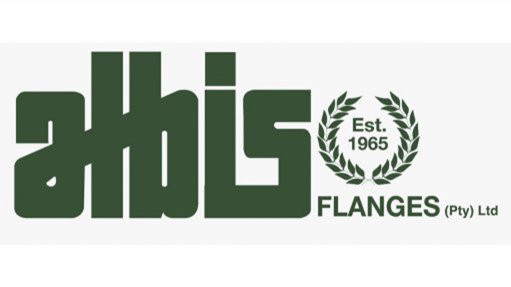International trade in fake goods surges
You should be acquainted with ‘fake news’. The buzzword, that is. Yes, the two are considered one. It was the 2017 word of the year, no less. But whether we possess the ability to distinguish ‘real news’ from ‘fake news’ is another matter. ‘Fake news’ is said to be “one of the greatest threats to democracy, free debate and the Western order”. What happened to the days when there was, simply, just news?
Before stepping off the word of the year theme, do you recall the 2018 word of the year? Three words were shortlisted: toxic, misinformation and nomophobia. You might content that the first two words continue the theme of ‘fake news’. Possibly, the only reason for not saying that all three words do is that, if you are like me, you do not know what ‘nomophobia’ means. ‘Nomophobia’ is the phobia of being out of cellular phone contact.
Returning to things fake – these are things that are not genuine, are an imitation, a counterfeit or pirated. If something is not the ‘real McCoy’ – the genuine article – then it goes by many names. So, what do we know of the phenomenon of fake goods in international trade?
On March 18, the Organisation for Economic Cooperation and Development (OECD) and the European Union’s Intellectual Property Office (EUIPO) published a report titled ‘Trends in Trade in Counterfeit and Pirated Goods’ as part of the Illicit Trade Series. The report covers all physical fake goods – which collectively infringe on trademarks, design rights and patents – and tangible pirated products, which breach copyright law. The report, however, does not include online piracy, which is a further drain on economies.
According to the report, the trade in counterfeit and pirated goods has risen steadily over the past few years – even as overall trade volumes stagnated – and now stands at 3.3% of international trade, up from 2.5%.
Trends in the trade in counterfeit and pirated goods puts the value of imported fake goods worldwide, based on 2016 customs seizure data, at $509-billion, compared with $461-billion in 2013. These amounts do not include domestically produced and consumed fake goods or pirated products that are distributed through the Internet.
It goes without saying that the trade in fake goods creates profits for organised crime gangs. In addition, the trade in counterfeits deprives firms and governments of revenue, feeds other criminal activities and jeopardises consumers’ health and safety.
The report identifies the 11 industries that are most affected by the counterfeit and pirated goods trade, expressed as a percentage of the total value of seizures in 2016. These are footwear (22%), clothing (16%), leather goods (13%), electrical equipment (12%), watches (7%), medical equipment (5%), perfumes and cosmetics (5%), toys (3%), jewellery (2%), pharmaceuticals (2%) and other industries (12%).
The majority of fake goods seized through customs interventions originated in the People’s Republic of China and Hong Kong, with other major countries of origin including the United Arab Emirates, Turkey, Singapore, Thailand and India.
The countries most affected by counterfeiting in 2016 were the US (whose brands or patents constituted 24% of the fake products seized), followed by France (17%), Italy (15%), Switzerland (11%) and Germany (9%). Worryingly, a growing number of businesses in Singapore, Hong Kong and emerging economies like Brazil and China are also becoming targets.
Unsurprisingly, small parcels sent by post or express courier are a prime and growing conduit for counterfeit goods. Small parcels accounted for 69% of total customs seizures by volume from 2014 to 2016 (57% by post and 12% by courier), up from 63% for the period 2011 to 2013.
Past OECD-EUIPO analysis has shown that free trade zones – where economic activity is driven by reduced taxes, customs controls and lighter regulation – can unintentionally facilitate counterfeit trade. The OECD is currently working with its 34-member countries to develop formal guidelines to help authorities deal with the problem. South Africa is not an OECD member.
Article Enquiry
Email Article
Save Article
Feedback
To advertise email advertising@creamermedia.co.za or click here
Comments
Press Office
Announcements
What's On
Subscribe to improve your user experience...
Option 1 (equivalent of R125 a month):
Receive a weekly copy of Creamer Media's Engineering News & Mining Weekly magazine
(print copy for those in South Africa and e-magazine for those outside of South Africa)
Receive daily email newsletters
Access to full search results
Access archive of magazine back copies
Access to Projects in Progress
Access to ONE Research Report of your choice in PDF format
Option 2 (equivalent of R375 a month):
All benefits from Option 1
PLUS
Access to Creamer Media's Research Channel Africa for ALL Research Reports, in PDF format, on various industrial and mining sectors
including Electricity; Water; Energy Transition; Hydrogen; Roads, Rail and Ports; Coal; Gold; Platinum; Battery Metals; etc.
Already a subscriber?
Forgotten your password?
Receive weekly copy of Creamer Media's Engineering News & Mining Weekly magazine (print copy for those in South Africa and e-magazine for those outside of South Africa)
➕
Recieve daily email newsletters
➕
Access to full search results
➕
Access archive of magazine back copies
➕
Access to Projects in Progress
➕
Access to ONE Research Report of your choice in PDF format
RESEARCH CHANNEL AFRICA
R4500 (equivalent of R375 a month)
SUBSCRIBEAll benefits from Option 1
➕
Access to Creamer Media's Research Channel Africa for ALL Research Reports on various industrial and mining sectors, in PDF format, including on:
Electricity
➕
Water
➕
Energy Transition
➕
Hydrogen
➕
Roads, Rail and Ports
➕
Coal
➕
Gold
➕
Platinum
➕
Battery Metals
➕
etc.
Receive all benefits from Option 1 or Option 2 delivered to numerous people at your company
➕
Multiple User names and Passwords for simultaneous log-ins
➕
Intranet integration access to all in your organisation














